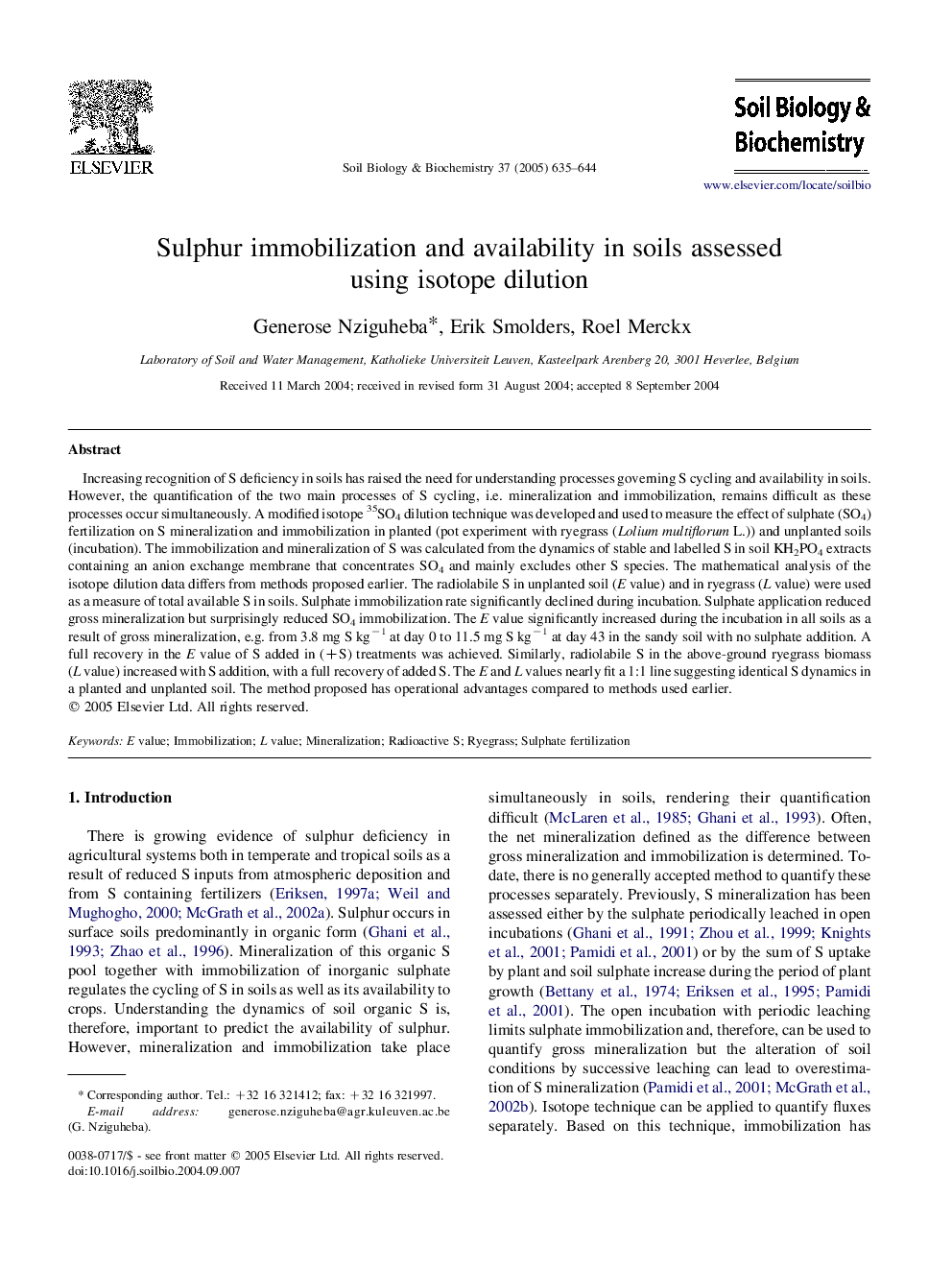| Article ID | Journal | Published Year | Pages | File Type |
|---|---|---|---|---|
| 10846283 | Soil Biology and Biochemistry | 2005 | 10 Pages |
Abstract
Increasing recognition of S deficiency in soils has raised the need for understanding processes governing S cycling and availability in soils. However, the quantification of the two main processes of S cycling, i.e. mineralization and immobilization, remains difficult as these processes occur simultaneously. A modified isotope 35SO4 dilution technique was developed and used to measure the effect of sulphate (SO4) fertilization on S mineralization and immobilization in planted (pot experiment with ryegrass (Lolium multiflorum L.)) and unplanted soils (incubation). The immobilization and mineralization of S was calculated from the dynamics of stable and labelled S in soil KH2PO4 extracts containing an anion exchange membrane that concentrates SO4 and mainly excludes other S species. The mathematical analysis of the isotope dilution data differs from methods proposed earlier. The radiolabile S in unplanted soil (E value) and in ryegrass (L value) were used as a measure of total available S in soils. Sulphate immobilization rate significantly declined during incubation. Sulphate application reduced gross mineralization but surprisingly reduced SO4 immobilization. The E value significantly increased during the incubation in all soils as a result of gross mineralization, e.g. from 3.8 mg S kgâ1 at day 0 to 11.5 mg S kgâ1 at day 43 in the sandy soil with no sulphate addition. A full recovery in the E value of S added in (+S) treatments was achieved. Similarly, radiolabile S in the above-ground ryegrass biomass (L value) increased with S addition, with a full recovery of added S. The E and L values nearly fit a 1:1 line suggesting identical S dynamics in a planted and unplanted soil. The method proposed has operational advantages compared to methods used earlier.
Related Topics
Life Sciences
Agricultural and Biological Sciences
Soil Science
Authors
Generose Nziguheba, Erik Smolders, Roel Merckx,
